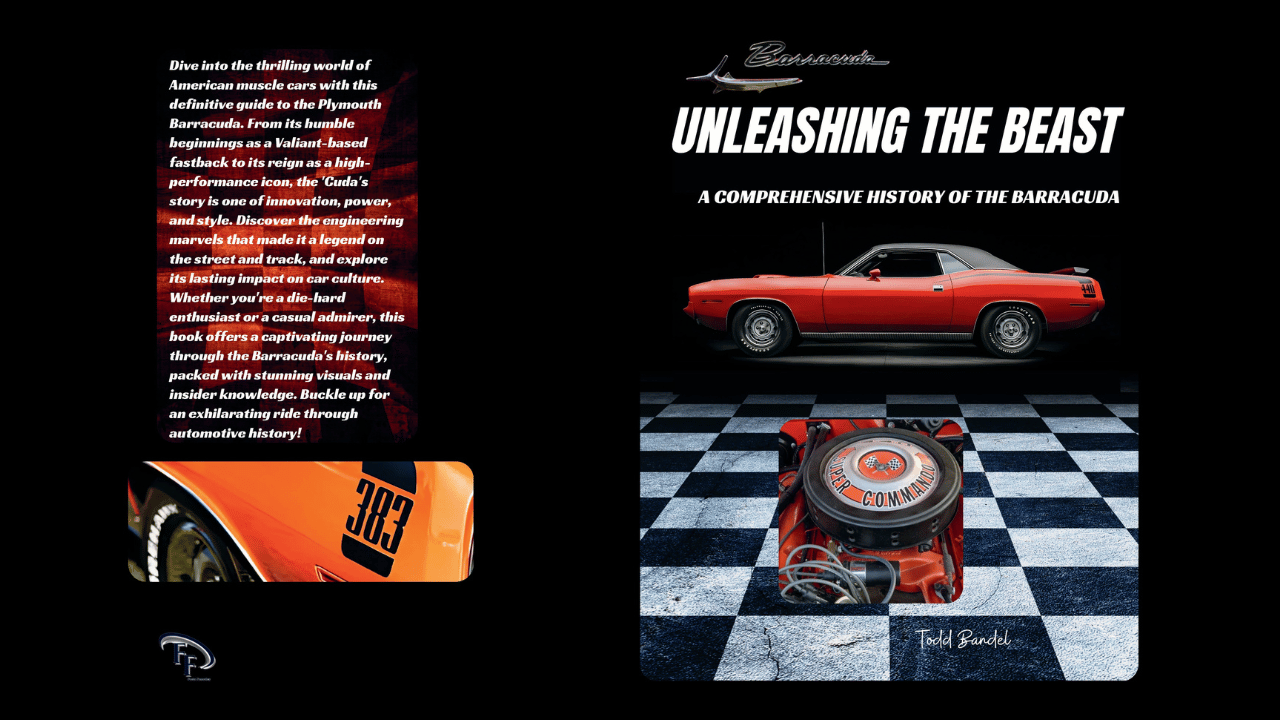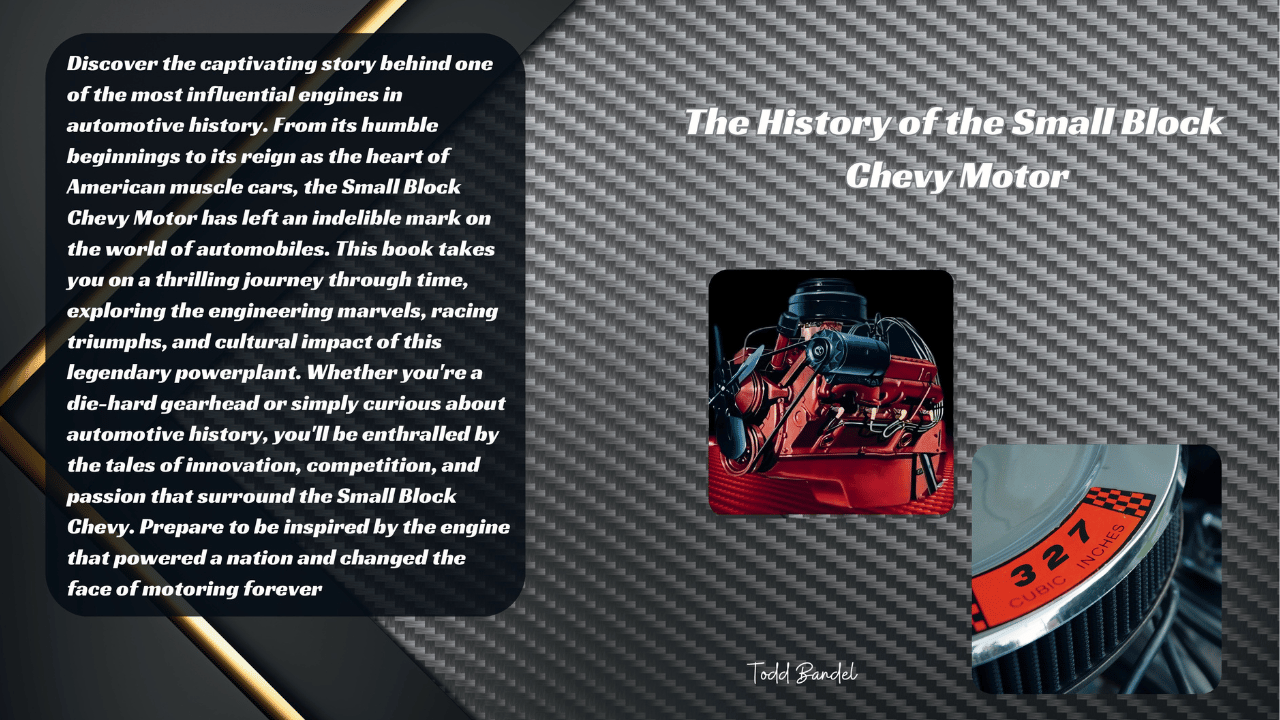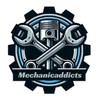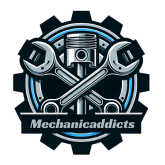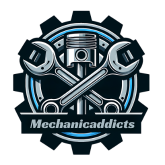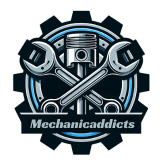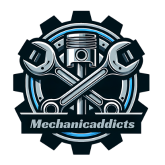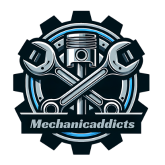The Monte Carlo SS: Chevrolet’s Crown Jewel
From its dazzling debut to its awe-inspiring resurgence in the NASCAR circuit, and its enduring place in car enthusiasts’ hearts.
Welcome to Mechanicaddicts. As an Amazon Associate, we earn from qualifying purchases (at no cost to you) from links found within these pages if you choose to buy something.
If there’s one number that captures the allure of the Chevrolet Monte Carlo SS, it’s legendary. A staple in American automotive history, this car is more than just an iconic design with a roaring engine; it’s a symbol of performance, style, and cultural significance.
For car enthusiasts, collectors, and Chevrolet fans, the Monte Carlo SS remains one of Chevy’s most celebrated creations, with high ratings. The reintroduction of the Monte Carlo badge in the fifth-generation Monte Carlo was a strategic move to revitalize the car’s appeal, despite its significant departure from previous iterations.
The Monte Carlo nameplate, despite being discontinued due to declining sales, was carried through various iterations to maintain the brand’s identity and cultural impact. This blog delves deep into its history, design, and legacy, while offering tips for collectors and restorers who aim to claim their piece of automotive history.
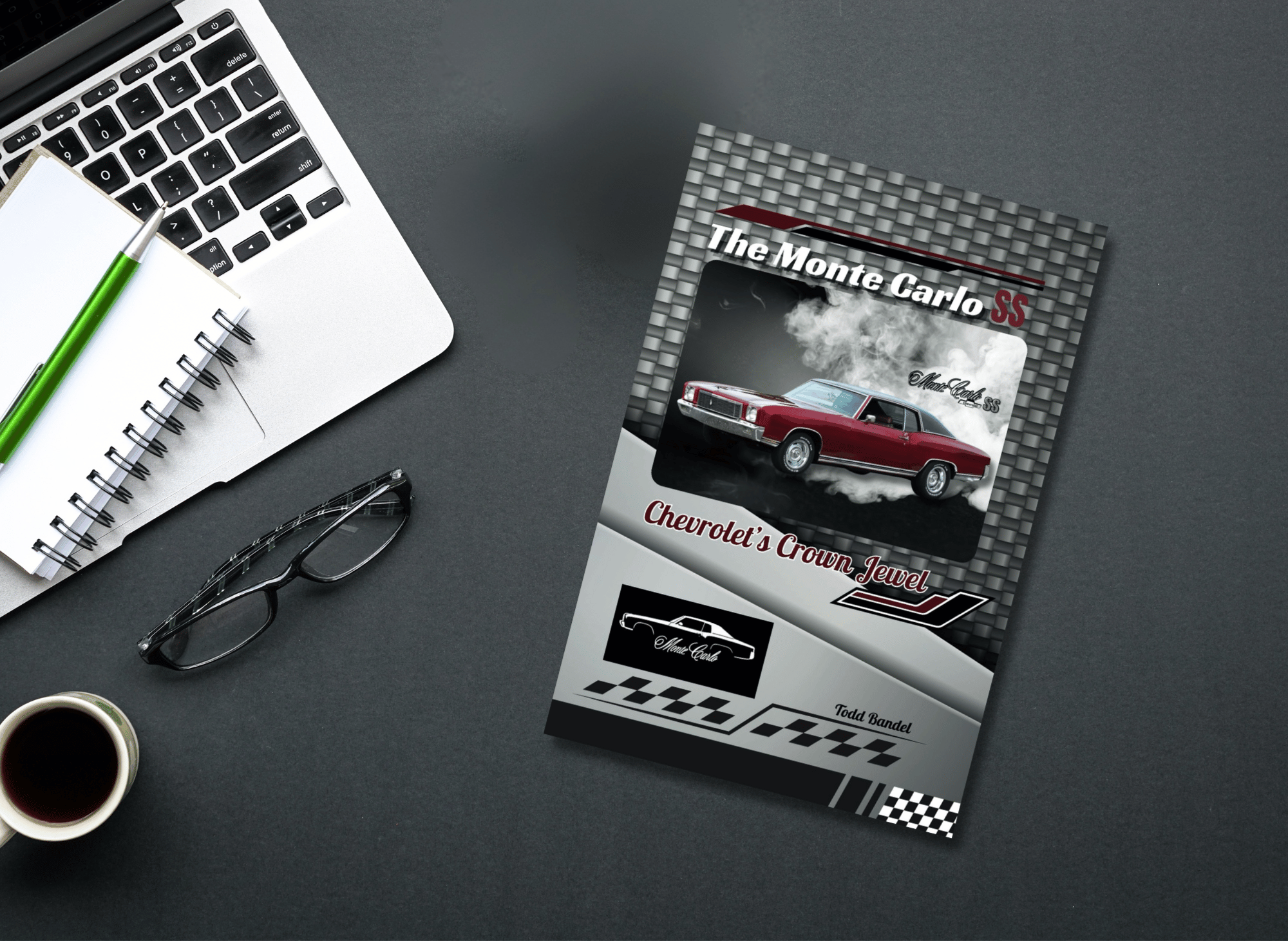
The Monte Carlo SS: Chevrolet’s Crown Jewel
Prepare to ignite your passion for classic American muscle as you dive into "The Monte Carlo SS: Chevrolet’s Crown Jewel.
Introduction to the Six Generations of the Monte Carlo
The Chevrolet Monte Carlo is a name that resonates with car enthusiasts and collectors alike. Produced by the Chevrolet division of General Motors, this two-door coupe spanned six generations from 1970 to 2007, featuring various wheel configurations. Named after the glamorous city of Monaco, the Monte Carlo was designed to compete with luxury coupes like the Pontiac Grand Prix and the Ford Thunderbird.
Introduced for the 1970 model year, the Monte Carlo quickly made a name for itself in the world of muscle cars. Its production run, which ended after the 2008 model year, saw over 4.4 million units produced, a testament to its enduring popularity across various model years.
The Monte Carlo was not just a car; it was a statement of style, performance, and racing heritage. Different Monte Carlos showcased powerful V-8 engines, high-performance tires, and the iconic SS version.

A Glimpse into Automotive History
The Monte Carlo SS wasn’t always a dominant racing and design icon. Initially conceived in the 1970s, the Monte Carlo was Chevrolet’s answer to the growing demand for affordable luxury coupes.
During its early planning phases, it was initially under the working name 'Concours'. But in 1983, Chevrolet took things up a notch by unleashing the Monte Carlo SS. Created with performance and unmistakable style in mind, the rear-wheel-drive Super Sport (SS) model featured a V8 engine designed for thrill-seeking drivers, along with luxurious leather seats that included stylish bucket seats and headrests.
One of the car’s defining milestones came with its heavy association with NASCAR throughout the 1980s. Chevrolet used the Monte Carlo SS as a foundation for its racing dominance, fine-tuning aerodynamics and performance to compete at the highest level. It soon became a fan favorite, both on and off the track.
When production ended in 1988, before a brief reintroduction in the early 2000s, the Monte Carlo SS left behind a legacy of innovation, cultural relevance, and heartfelt memories for car enthusiasts, despite its short model run. The Monte Carlo SS was discontinued and retired after the 2008 model year.
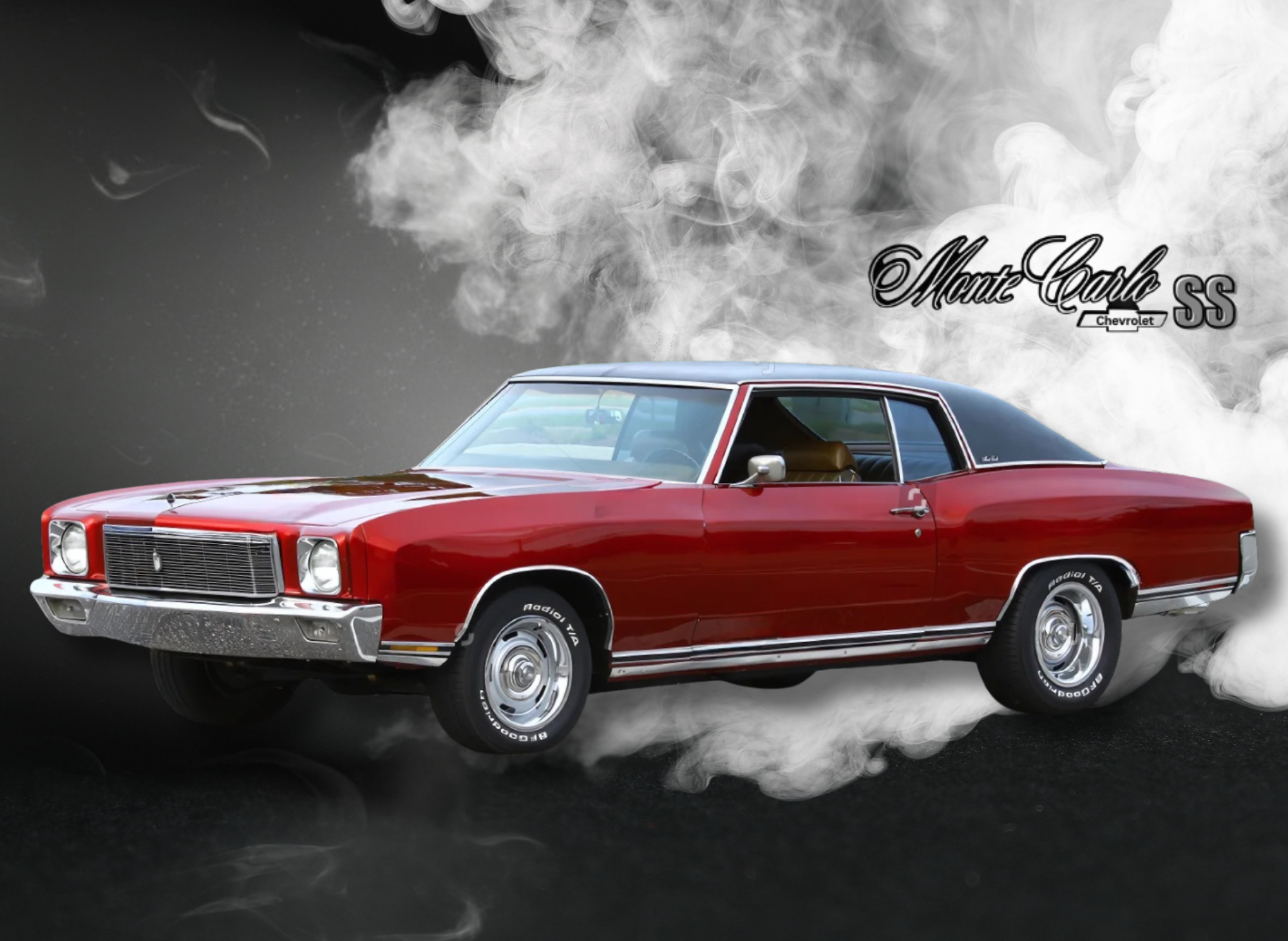
History and Development
The Chevrolet Monte Carlo boasts a rich history that spans six generations, from its debut in 1970 to its final model year in 2007. Named after the luxurious city of Monaco, the Monte Carlo was designed to exude elegance and sophistication, aiming to compete with other high-end coupes, such as the Pontiac Grand Prix and Ford Thunderbird. This two-door coupe quickly became a symbol of luxury and performance, capturing the hearts of both car enthusiasts and collectors.
The Monte Carlo’s journey began with its first generation, which set the stage for its legacy in the world of muscle cars. Over the years, the Monte Carlo evolved, adapting to changing market demands and technological advancements. Each generation brought new styling cues, engine options, and features, such as full instrumentation, ensuring that the Monte Carlo remained a relevant and desirable choice for car buyers.
The Evolution of the Monte Carlo SS
The Monte Carlo SS, or Super Sport, was the high-performance variant that truly set the Monte Carlo apart. Introduced in 1970, the SS model quickly gained a reputation for its powerful engine, sport-tuned suspension, and distinctive styling, often being rated among the best in the muscle car category. Available in various trim levels over the years, including the popular four-speed manual option, the Monte Carlo SS became a favorite among racing enthusiasts and muscle car enthusiasts, setting it apart from other vehicles.
The SS model was more than just a car; it was a statement of power and performance. With its aggressive styling and robust engine options, including strato bucket seats, the Monte Carlo SS was built for those who craved the thrill of the open road. Whether tearing up the track or cruising down the highway, the Monte Carlo SS delivered an exhilarating driving experience that left a lasting impression.

Key Milestones in Development
The Monte Carlo’s development is marked by several key milestones that highlight its evolution and enduring appeal. The first generation, introduced in 1970, set the standard for luxury coupes with its elegant design and powerful engine options. The second generation, launched in 1973, introduced fresh new styling and a range of engine choices, further solidifying the Monte Carlo’s reputation.
In 1978, the third generation saw the Monte Carlo downsized and given a more aerodynamic design, reflecting the changing automotive landscape. The fourth generation, introduced in 1981, featured a new platform and continued to offer a variety of engine options, catering to a wide range of consumers.
The fifth generation, introduced in 1995, featured modern styling and continued to offer a range of engine options, including the high-performance SS model. The sixth and final generation, introduced in 2000, featured updated styling and continued to build on the Monte Carlo’s legacy of performance and luxury.
Throughout its production run, the Monte Carlo was developed by GM’s Chevrolet division, drawing on the company’s extensive experience with racing and muscle cars. The car’s design and engineering were influenced by a desire to create a luxury vehicle that could compete with other high-end cars on the market, offering features such as air conditioning. The Monte Carlo was available in various trim levels, including the SS, which was known for its high-performance capabilities and stylish taillamps and parking lamps.
The Monte Carlo also offered a range of optional features, including power steering, power seats, and a sunroof, which enhanced its appeal to luxury car buyers. Its comfort, style, and performance made it a popular choice among car enthusiasts, and its racing heritage only added to its allure. Features like a sturdy firewall contributed to its overall design.
In addition to its production history, the Monte Carlo has a storied racing heritage. It was a dominant force in various forms of motorsport, including NASCAR, where legends like Dale Earnhardt drove it. The Monte Carlo’s racing success further solidified its status as an iconic American car, and its legacy is still celebrated by racing fans and car enthusiasts today.
Overall, the Chevrolet Monte Carlo is a testament to GM’s ability to create a luxury car that combines style, performance, and a racing pedigree at a competitive price. Several key milestones, including careful consideration of past accidents that help mark its development,. Its enduring popularity is a testament to its timeless appeal. Whether on the road or the racetrack, the Monte Carlo remains a beloved icon in the world of classic cars.

What Set the Monte Carlo SS Trim Levels Apart?
Just what makes the Monte Carlo SS so special? Well, it’s all in the details. The unique styling of the Monte Carlo SS, with its sleek lines and distinctive design elements, set it apart from other models. Let’s explore the features that made this car a standout icon.
Optional features such as upgraded interiors, advanced audio systems, keyless entry, and performance packages, along with various financing options, further enhanced the car’s appeal, allowing buyers to customize their Monte Carlo SS to their preferences.
1. Performance-Driven Engine Options
The SS trim came equipped with a 5.0L HO (High Output) V8 engine as the base engine, offering 180 horsepower in its early 1980s models. Available with both three-speed and four-speed automatic transmission options, the Monte Carlo SS offered a range of configurations to enhance performance and the driving experience. Though modest by today’s standards, this engine delivered reliability, torque, and the kind of performance that drivers expected from a muscle car. It wasn’t just a car; it was a machine engineered to perform.
2. Aerodynamic Design
The Monte Carlo SS owed part of its racing success to its slick aerodynamics. The inclusion of front disc brakes as a standard feature significantly contributed to the car's performance and safety. Changes to the grille and bumper contributed to the car’s aerodynamic design, enhancing its ability to cut through the air. Its sloped nose, rear deck spoiler, and flush-mounted headlights helped reduce drag, making it more adept at slicing through the air during NASCAR events. These features also translated to the production model, hinting at its track-tuned DNA.
3. Driver-Centric Engineering
Beyond its raw muscle, the Monte Carlo SS managed to blend performance with comfort. One of the interior color options available for the Monte Carlo SS is ebony, adding to its luxurious appeal. The inclusion of power steering and a center console as part of the car’s luxury features further enhanced its appeal. Offering a mix of plush interiors and performance-oriented instrumentation panels, it delivered a driving experience that thrilled without compromising on luxury.
4. Striking Aesthetic
The Monte Carlo SS sported aggressive yet refined lines, often complemented by vibrant racing stripes that captured the attention of every passerby. Available exterior color options included striking shades like Victory Red and Galaxy Silver Metallic. The front end featured a rectangular, four-headlight arrangement and a distinctive chrome grille, which contributed to its striking aesthetic. Its design perfectly captured the era while remaining timeless.

Engineering Innovations and Their Impact
Every Monte Carlo SS highlighted Chevrolet’s commitment to pushing the boundaries of automotive engineering. Built on the G-body platform, the Monte Carlo SS exemplified mid-size formal coupes of the 1980s. Examples of engineering achievements include:
- Hydraulic roller camshaft: Enhancing performance by improving airflow and reducing friction.
- Monte Carlo Aero Coups: Limited-edition models that further minimized drag, explicitly built for NASCAR homologation rules.
- Four-speed automatic transmission: Developed to pair with various V-6 engine options, providing a significant technical advancement in the fifth generation.
These choices solidified Chevrolet’s intent to equip the Monte Carlo with a blend of power and efficiency, setting the SS apart from other coupes on the market. GM's influence on the car's design and engineering was evident, showcasing the brand's legacy in the automotive industry.
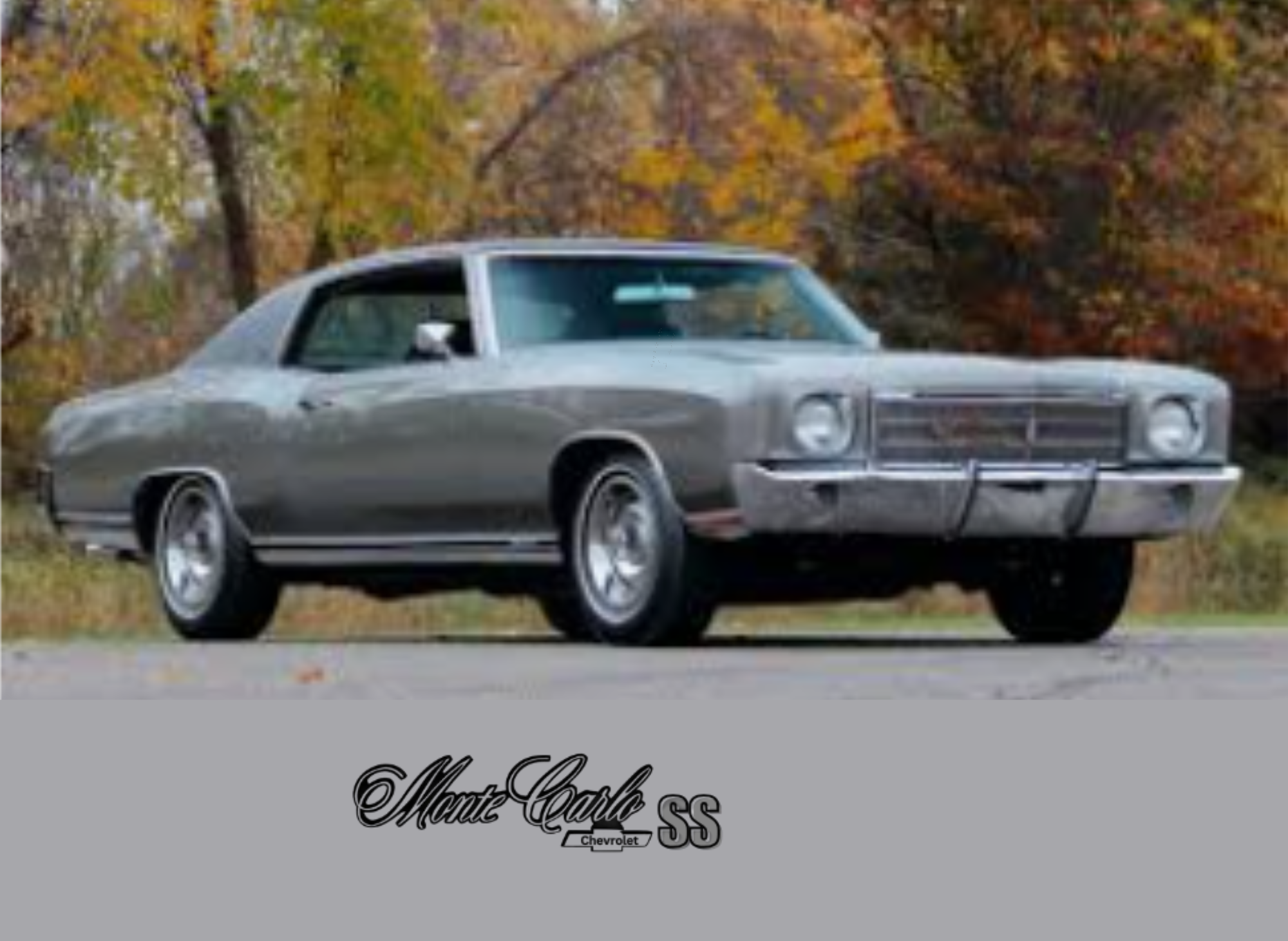
A Cultural Icon in Racing
The Monte Carlo SS became more than just a car; it became a cultural phenomenon. During its heyday in the 1980s, it achieved pop-culture relevance as a symbol of power, confidence, and Americana. It was the hero car on streets and racetracks alike.
The exhilarating and fun driving experience of the Monte Carlo SS was further celebrated with special editions like the Intimidator Edition, which paid homage to racing legends with unique features such as supercharged engines and distinct color schemes.
Today, its role in car culture persists. Nostalgia for the Monte Carlo SS continues to drive its popularity among collectors, racing fans, and enthusiasts who appreciate its bold design and breathtaking heritage.
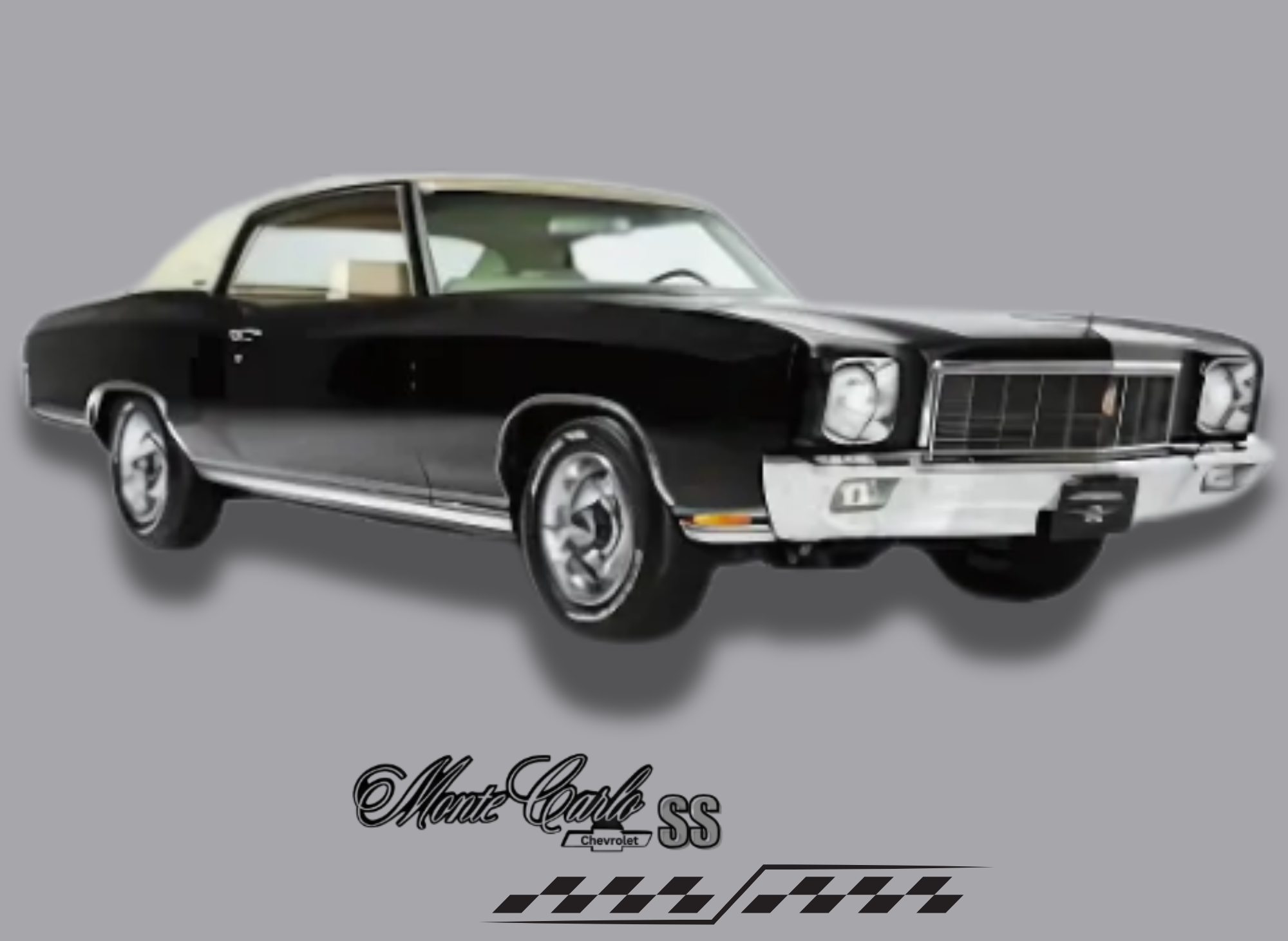
Collecting and Restoring a Monte Carlo SS
Thinking of adding a Monte Carlo SS to your collection? Here’s some advice.
When considering a purchase, it's crucial to inspect the car's condition and review the photos to ensure a great experience.
What to Look for When Buying
- Originality is key. Look for models with original engine parts, interior materials, and paint jobs.
- Check the documentation. Ensure the VIN matches the paperwork and confirms that the car is an accurate SS model. A smooth purchase process is crucial, so ensure all questions from the seller are addressed promptly.
- Look for rust. Frame and body rust can make restoration an expensive process. Additionally, check the rear trunk area for rust and other issues, as this can affect the car's overall value and condition.
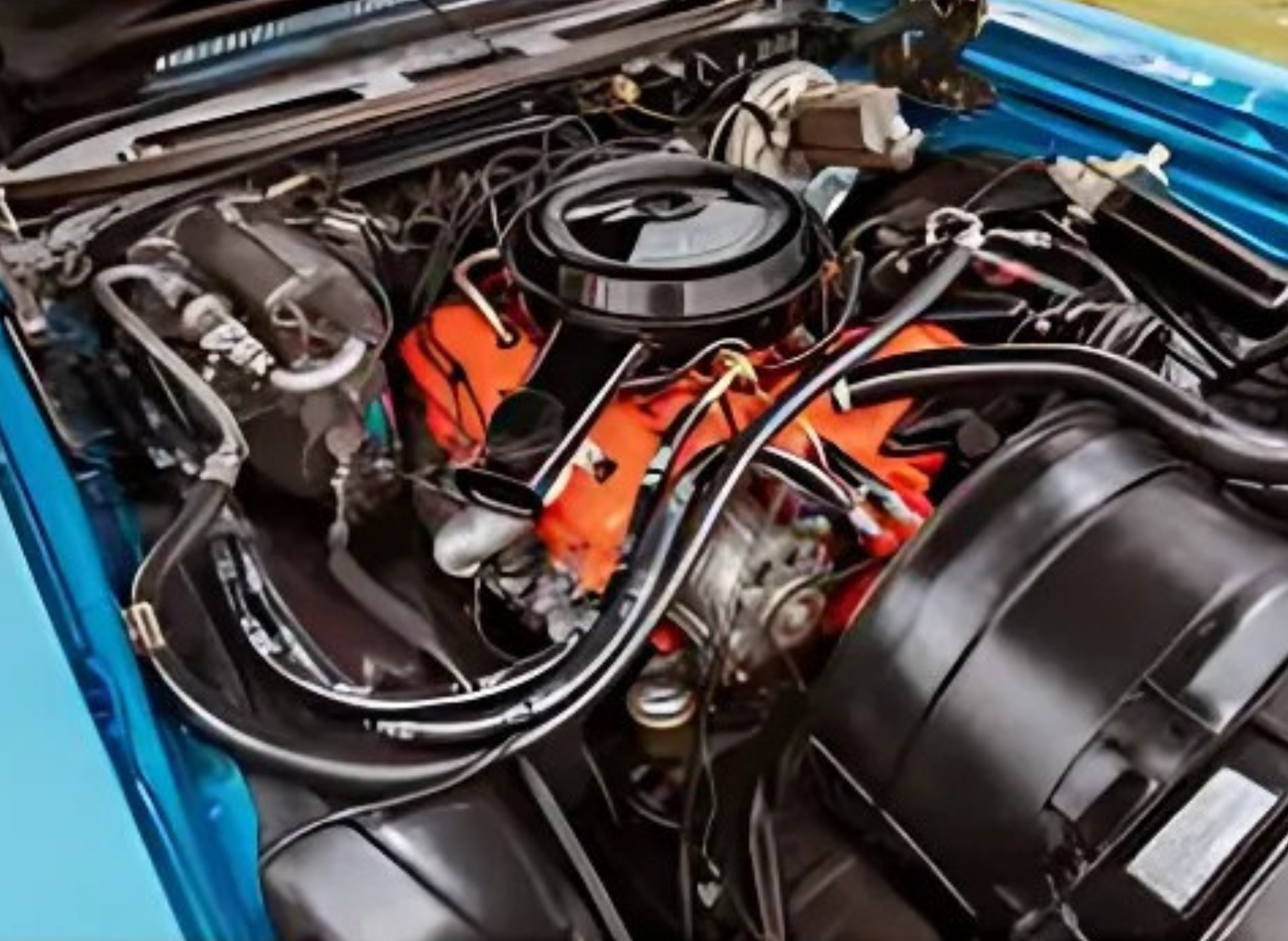
Restoration Tips
- Source authentic parts, even if that means paying a premium. The Monte Carlo SS received high ratings and underwent significant design changes over the years, including the 1976 front-end redesign and the addition of new options and features in various model years.
- Consult professional restorers or join Monte Carlo SS enthusiast forums for guidance.
- Preserve the interior and exterior as true to the original as possible. Collectors value authenticity over customization. Optional features and added elements can enhance the car’s authenticity and overall value.
One fascinating resource for collectors is this book, “Monte Carlo SS: 1970-1988,” which provides detailed information on the history and development of the Monte Carlo SS model, along with reader comments. Additionally, attending car shows and connecting with other enthusiasts can provide valuable insights into restoration techniques and potential sources for parts.
When it comes to restoring a classic car like the Monte Carlo SS, patience and attention to detail are key. Taking the time to properly research and source authentic parts, while preserving the original design elements, will result in an awe-inspiring finished product. And once your Monte Carlo SS is fully restored, you’ll have a beautiful piece of automotive history that’s sure to turn heads wherever you go. Happy restoring!
The Chevrolet Monte Carlo has long been a staple in the realm of personal luxury cars, with each generation offering distinctive features that continue to captivate enthusiasts. The fifth generation of the Monte Carlo, in particular, brought a fresh take to the lineup, blending comfort and sportiness into a sleek design.
Available with options like alloy wheels and featuring bold color choices like Superior Blue Metallic and Torch Red, this generation stood out for its striking visual appeal. Minor revisions throughout its production years ensured that its core elements, such as the iconic ducktail spoiler and Knight's Crest badging, remained aligned with consumer expectations.
Under the hood, the Monte Carlo offered flexibility with its drivetrain options, including front-wheel drive configurations, which became a standard feature of the model. The standard engine delivered reliable performance, enhanced by SAE net ratings that reflected efficiency without sacrificing power. For transmission, buyers could choose between a four-speed automatic transmission or a three-speed automatic transmission, catering to preferences for smooth, responsive driving.
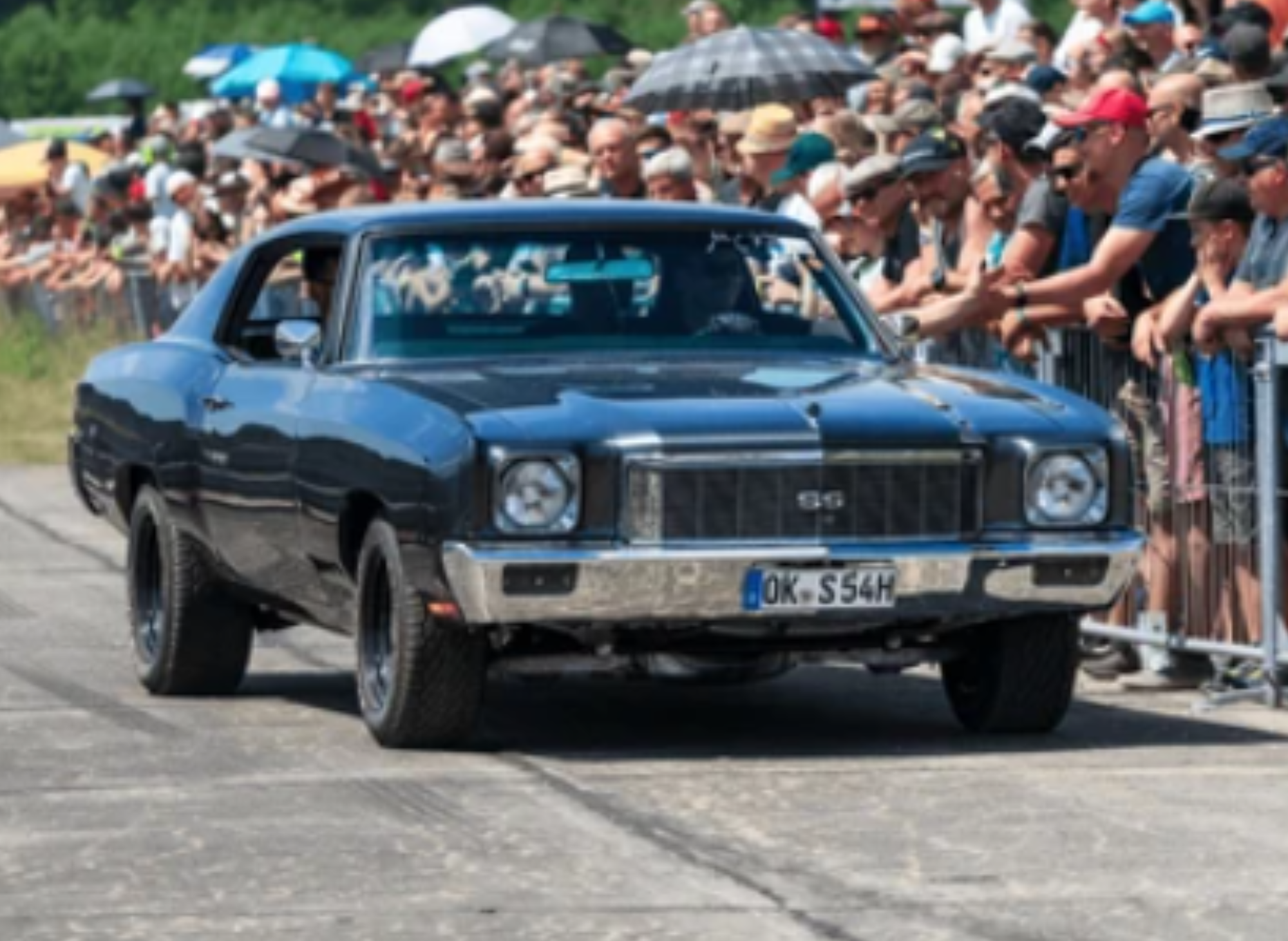
Inside, the Monte Carlo brought a host of features to amplify the driving experience. Power windows were among the amenities designed for convenience, while the rear spoiler and trunk added a sporty yet practical touch. The rear window design further complemented the car’s aerodynamic profile. A key highlight of this era was the introduction of catalytic converters, which ensured compliance with evolving emissions standards while maintaining fuel efficiency that appealed to a broad audience.
The lineage of the Monte Carlo was also cemented in motorsport history through its various pace cars and its connection to racing legends like Tony Stewart. These connections underscored Chevrolet's commitment to performance, with the Monte Carlo leaving an indelible impression at high speeds. Whether cruising the streets of Arlington Heights or dominating race tracks, the Chevy Monte Carlo continues to resonate with car enthusiasts, bridging a legacy of impending change with a nod to its iconic roots.
References
Throughout this document, we have mentioned various sources for parts and information related to the Monte Carlo SS. Of course, there are multiple options available for different car models through reputable dealers, each with its own set of features and associated costs. Some helpful websites include:
- Classic Industries
- OPGI
- YearOne
- The El Camino Store
A thorough search is crucial to find parts that match your car’s specifications. These sites offer a wide range of parts specifically for the Monte Carlo SS, as well as other classic cars. Additionally, joining online forums or clubs dedicated to classic vehicles can provide even more resources and connections for finding parts and advice from fellow enthusiasts.
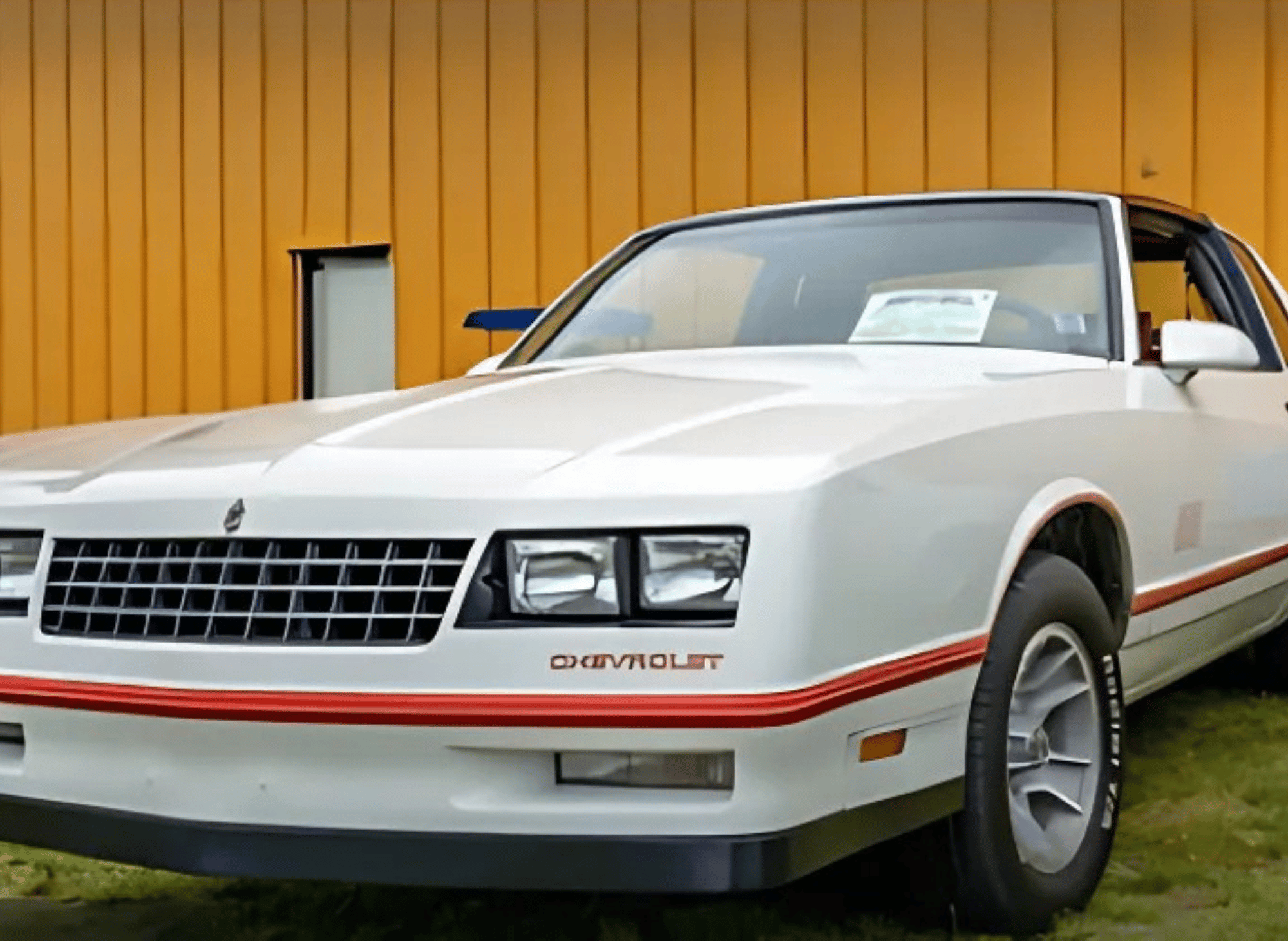
What Years Did They Offer a Four-Speed Transmission in the Chevy Monte Carlo?
In the fifth generation of the Monte Carlo, which ran from 1978 to 1988, Chevrolet offered a four-speed automatic transmission in some models. The exact years that this option was available varied throughout the production run.
The base model Monte Carlos in this generation were equipped with a three-speed automatic transmission as standard. However, starting in 1981, customers could opt for a four-speed overdrive transmission on select trim levels.
The four-speed transmission was also available in V6 and V8 engine options during specific years. For example, in 1985 and 1986, the four-speed was only offered with the V6 engine. In contrast, from 1987 to 1988, the four-speed was only available with V8 engines.
In terms of fuel efficiency, the base model Monte Carlo from this generation had an average city mileage of around 13-15 mpg and a highway mileage of 19-22 mpg. However, with advancements in technology, some trim levels offered slightly improved fuel efficiency, such as the Sport Coupe, which could achieve up to 27 mpg on the highway.
Despite being marketed as a sporty car, the third-generation Monte Carlo also had its fair share of luxury features. These included options for power windows, locks, seats, and mirrors. In addition, certain trim levels offered amenities such as air conditioning, cruise control, and a tilt steering wheel.
Evolution of the Fourth-Generation Monte Carlo
In 1981, Chevrolet unveiled the fourth-generation Monte Carlo, which underwent numerous changes and advancements compared to its predecessors. The most notable change was the switch to a front-wheel drive platform, making it one of the few American cars to adopt this technology at the time.
The front-wheel drive layout allowed for more interior space and improved handling. It also featured a new transverse leaf spring suspension system and a MacPherson strut front suspension, which gave it a smoother ride quality.
The exterior design also received an update with sleeker lines and a more aerodynamic shape. This not
How did the Monte Carlo compare to the Chevelle and Buick Regal?
The Chevrolet Monte Carlo was first introduced in 1970 as a two-door coupe version of the popular Chevelle. It featured a longer wheelbase and larger body compared to its predecessor, which gave it a more luxurious feel.
In terms of design, the Monte Carlo shared many similarities with its sister car, the Buick Regal. Both vehicles had a sleek and modern look with clean lines and rounded edges. However, the Monte Carlo had a more angular front end and grille design compared to the Regal's more curved features.
One notable difference between the Monte Carlo and both the Chevelle and Buick Regal was their use of t-tops. The removable glass panels over the driver's and passenger's seats added a unique touch to the car's design and also allowed for an open-air driving experience.
In terms of performance, the Monte Carlo offered a range of engine options, including a 5.7-liter V8 that produced 210 horsepower and a 3.8-liter V6 that put out 115 horsepower. Compared to its competitors, these numbers were relatively modest, but the Monte Carlo was still praised for its smooth ride and handling.
Over the years, the Monte Carlo underwent several updates and changes as it evolved with the times. In 1981, Chevrolet introduced a high-performance version called the SS (Super Sport), which featured a more powerful 305-cubic-inch V8 engine. This model was popular among car enthusiasts and helped boost the Monte Carlo's reputation as a capable muscle car.
In 1985, the Monte Carlo underwent a significant redesign, adopting a sleeker and more aerodynamic body style. The new design was well received, with critics praising its improved fuel efficiency and handling. The SS model also received an upgrade to a 180 horsepower 5.0-liter V8 engine, making it even more desirable for those seeking power.
The 1990s saw the addition of more high-tech features in the Monte Carlo, including anti-lock brakes and keyless entry. In 1995, Chevrolet released a limited edition "Intimidator" Monte Carlo, paying tribute to NASCAR legend Dale Earnhardt. This special edition featured a black and silver exterior with red trim and "Intimidator" badging.
In the early 2000s, the Monte Carlo continued to evolve, with new models sporting improved engines and more advanced technology. In 2006, Chevrolet introduced the seventh-generation Monte Carlo, featuring a bold and modern design. However, sales were declining as customers shifted towards smaller and more fuel-efficient vehicles.
After years of dwindling sales, Chevrolet announced that it would discontinue production of the Monte Carlo in 2007. While it was sad to see such an iconic car come to an end, its legacy lives on through the memories of its loyal fans and the impact it had on the automotive industry.
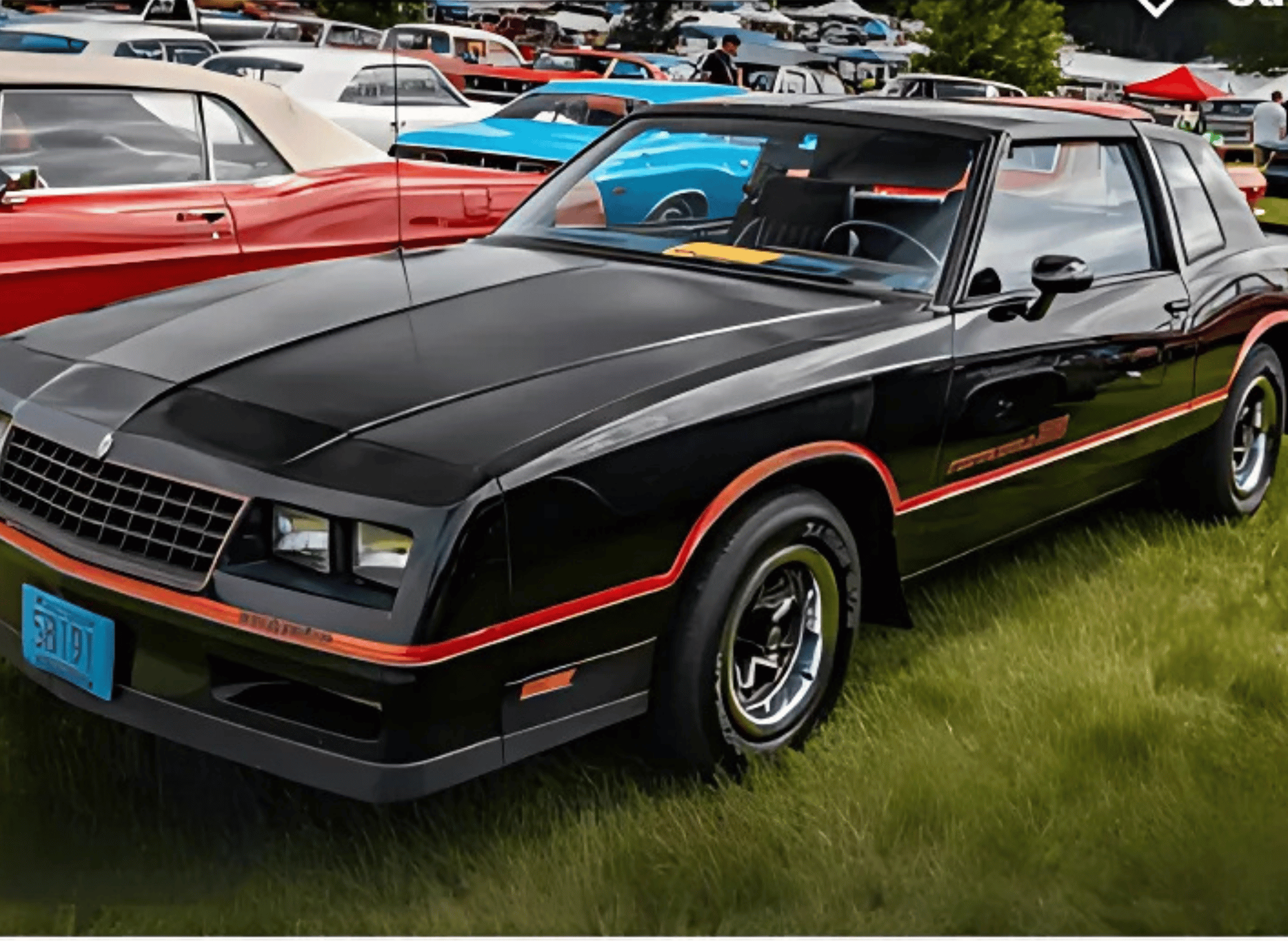
Was There a Shortened Model Year in the Production of the Monte Carlo?
Yes, there was a shortened model year for the Monte Carlo. In 1988, Chevrolet decided to end production of the current body style and introduce a new, redesigned Monte Carlo for the 1989 model year. This resulted in an abbreviated model year for the 1988 Monte Carlo.
This shortened model year was not uncommon for car manufacturers during this period. It allowed them to introduce new designs and updates sooner, keeping up with changing consumer demands and market trends. However, this also meant that some models had a shorter lifespan than others.
For the 1988 Monte Carlo, only two trim levels were offered: LS and SS, compared to four trim levels in the previous model year. The LS trim was equipped with a 3.8L V6 engine, while the SS trim featured a more powerful 5.0L V8 engine.
The exterior of the Monte Carlo also underwent some changes, featuring updated front and rear bumpers, new taillights, two horizontal dividers, and a sleeker overall design. Inside, the interior was revamped with a new instrument panel and digital dashboard display.
Overall, despite its shortened model year, the 1988 Monte Carlo still delivered on its reputation for performance and style. It remained a popular choice among car enthusiasts and collectors alike.
Legacy and Impact
The Monte Carlo may no longer be in production, but its legacy lives on. It was a symbol of American muscle and style, and its presence on the road turned heads wherever it went. Its powerful engines, sleek design, and impressive performance made it a favorite among car enthusiasts.
In addition to its iconic status, the Monte Carlo also left a lasting impact on the automotive industry. It paved the way for other popular Chevrolet models, such as the Impala and Camaro, both of which borrowed design elements from the Monte Carlo.
Furthermore, advancements made in technology during its production have influenced the design and performance of modern-day cars. The Monte Carlo was one of the first vehicles to incorporate computerized engine controls, which helped improve its efficiency and overall performance.
The legacy of the Monte Carlo lives on even after its discontinuation in 2007. Car enthusiasts still celebrate it through various events and meetups dedicated to this iconic model. Many restored versions can still be seen on the road today, a testament to its enduring popularity.
In conclusion, the Chevrolet Monte Carlo holds a special place in automotive history for its unique design, successful racing career, and lasting impact on the industry. Its legacy will continue to inspire car lovers for generations to come. Whether you're a die-hard fan or appreciate its significance, the Monte Carlo remains an iconic symbol of American muscle and innovation. Keep an eye out for this classic beauty on your next road trip and join in celebrating its enduring legacy.
Our Conclusion
Restoring a classic car like the Monte Carlo SS is not just about bringing back a vintage vehicle; it's also about preserving a piece of history. With patience, research, and attention to detail, you can successfully restore a Monte Carlo SS to its former glory, ensuring you're aware of any previous accidents.
Whether you're a seasoned car enthusiast or just starting, the satisfaction and pride that come with restoring a classic car make it a worthwhile endeavor. Maintenance activities, such as replacing a fuel pressure regulator, are often scheduled around February to ensure optimal performance.
The start of my restoration journey was deeply influenced by my background, having been raised in Southern California, where car culture is a significant part of life. As you embark on your restoration journey, remember to take your time and enjoy the process. It may seem overwhelming at times, but the result will be well worth it.
Don’t hesitate to seek help from experts or fellow enthusiasts when needed, and always prioritize safety in your restoration efforts. Personal experiences related to vehicle purchases, like those in December, can provide valuable insights and motivation.
And don’t forget to document your progress along the way! Taking before-and-after pictures can serve as a reminder of how far you’ve come and can also be shared with others who share your passion for classic cars.
Thank you for reading. Remember that the Monte Carlo SS is often called a classic!
Your friend,
Todd
#MonteCarloSS #ClassicCar #MuscleCar #ChevroletMonteCarlo #CarEnthusiast #ClassicChevy #CarLovers #V8Power #AutoRestoration #CarCulture
🚗🔥🏁💨🎨🔧🛠️🏎️🏆❤️

